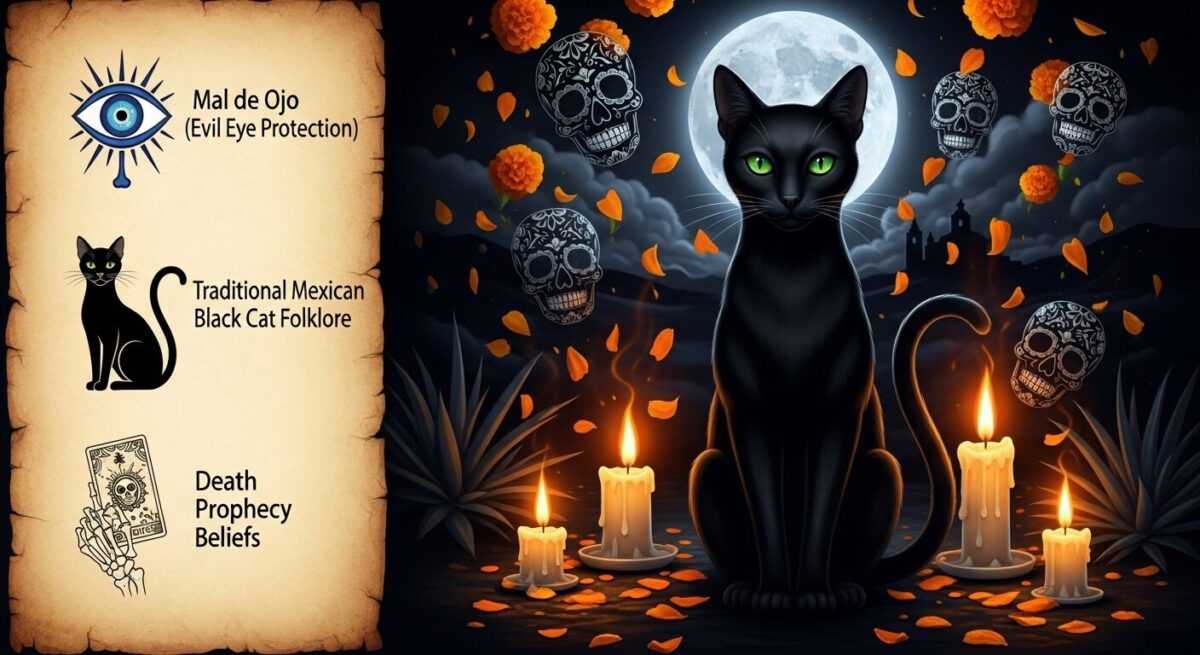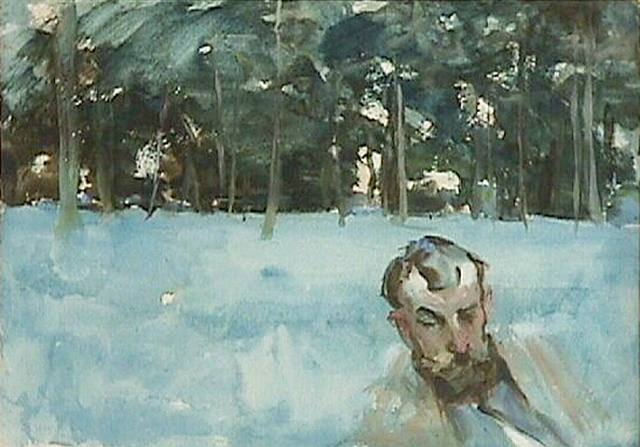I always told my 8th graders that self-portraits take real bravery. Frida Kahlo didn’t just paint faces; she created a secret language where monkeys offered protection and thorns whispered of pain. Her work isn’t just art – it’s a visual diary. That’s why I love teaching the decoding Frida Symbols.
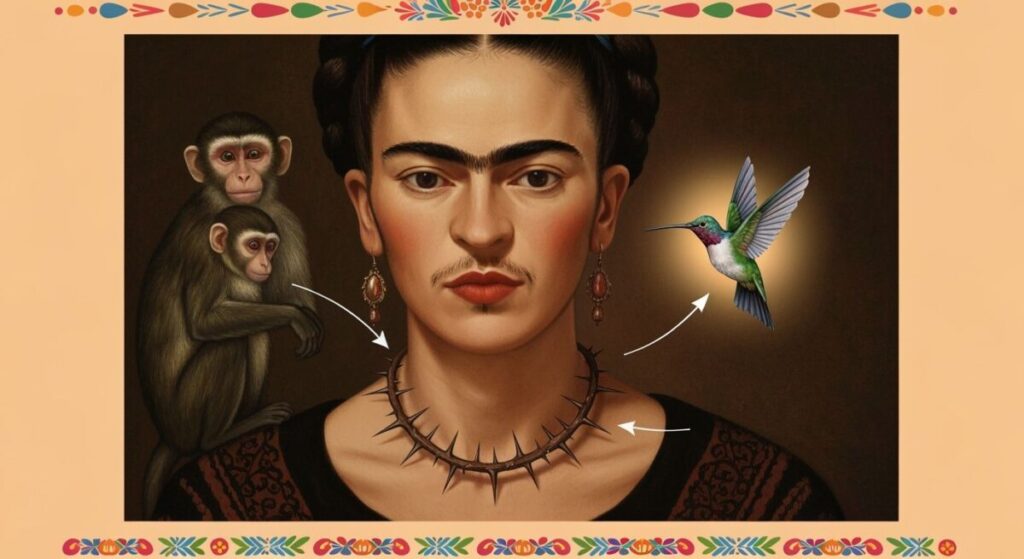
Key Points Summary:
- Frida used animals, plants, and religious symbols to express deep personal emotions
- Each symbol connected to Mexican culture, Aztec mythology, or her personal experiences
- Her symbolic language helped her communicate feelings about pain, love, identity, and death
- Understanding these symbols reveals the true depth of her artistic genius
The Most Important Frida Kahlo Symbols Explained
Frida Kahlo didn’t just paint pictures—she created a complex system of art symbolism that spoke directly to viewers’ hearts. Like many great artists throughout history, she understood that symbols could express feelings that words couldn’t capture. Her paintings became a bridge between her inner world and ours, using images everyone could recognize but with meanings that went much deeper.
The Mexican painter drew from multiple sources for her symbolic vocabulary. She combined ancient Aztec mythology with Catholic religious imagery, mixed Mexican folklore with personal experiences, and blended traditional symbols with her own creative interpretations. This unique approach to hidden meanings in famous paintings made her work instantly recognizable and emotionally powerful.
>> Limited Edition Frida Kahlo Artworks <<
The Monkey: Frida Kahlo’s Symbol of Protection and Lust
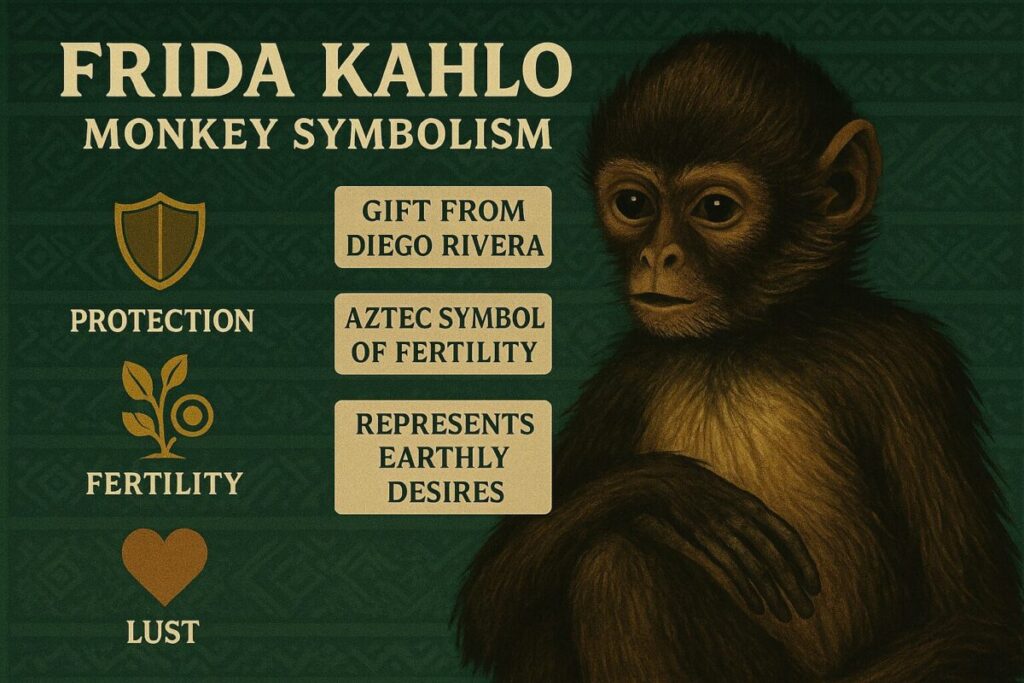
The spider monkeys that appear in many of Frida’s self-portraits weren’t just pets—they were powerful symbols carrying deep meaning. In Aztec mythology, monkeys represented fertility and earthly desires, while in Mexican folklore, they served as protective spirits. Frida owned several pet monkeys, gifts from her husband Diego Rivera, but their presence in her paintings meant much more than simple companionship.
In paintings like “Self-Portrait with Monkeys” (1943), the animals appear as guardians, their arms wrapped protectively around Frida’s shoulders. Yet they also symbolized the complex emotions she felt about desire, fertility, and her relationship with Diego. The monkeys became stand-ins for the children she couldn’t have, offering comfort while reminding her of loss.
Key meanings of monkey symbolism in Frida’s work:
- Protection: Acting as spiritual guardians
- Fertility: Representing the life force she struggled with
- Lust: Symbolizing earthly desires and passion
- Companionship: Filling the void left by absent children
Hummingbird Symbolism: Love, Death, and Mexican Folklore
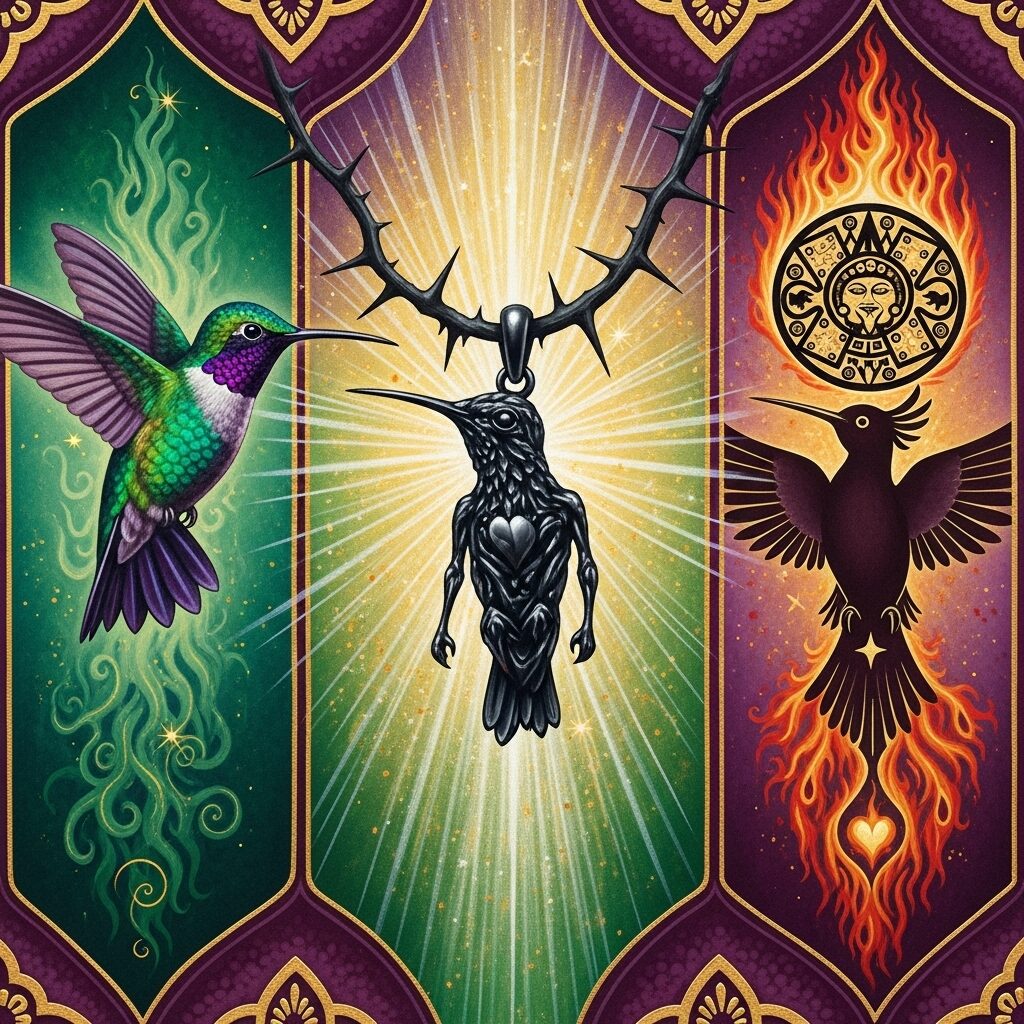
Perhaps no symbol in Frida’s work is more haunting than the dead hummingbird pendant hanging from her thorn necklace in “Self-Portrait with Thorn Necklace and Hummingbird” (1940). In ancient Mexican beliefs, hummingbirds were messengers between the living and the dead, symbols of resurrection and the soul’s journey after death.
The lifeless bird represents fallen love—likely referring to her tumultuous relationship with Diego Rivera during one of their separations. But hummingbirds in Mexican culture also symbolized hope and rebirth. Even in death, the tiny creature suggested the possibility of resurrection, of love returning to life.
According to Aztec mythology, the god Huitzilopochtli often appeared as a hummingbird, representing war, sacrifice, and renewal. Frida’s use of this symbol connected her personal pain to ancient spiritual beliefs, transforming her suffering into something sacred and meaningful.
“I paint my own reality. The only thing I know is that I paint because I need to, and I paint whatever passes through my head without any other consideration.”
Frida Kahlo
Thorns as Martyrdom: Religious Imagery in Kahlo’s Self-Portraits
The thorn necklace that appears in several of Frida’s paintings draws directly from Christian imagery, specifically Christ’s crown of thorns. This powerful symbol of martyrdom and sacrifice resonated deeply with Frida, who lived with constant physical pain from polio, a bus accident, and multiple surgeries throughout her life.
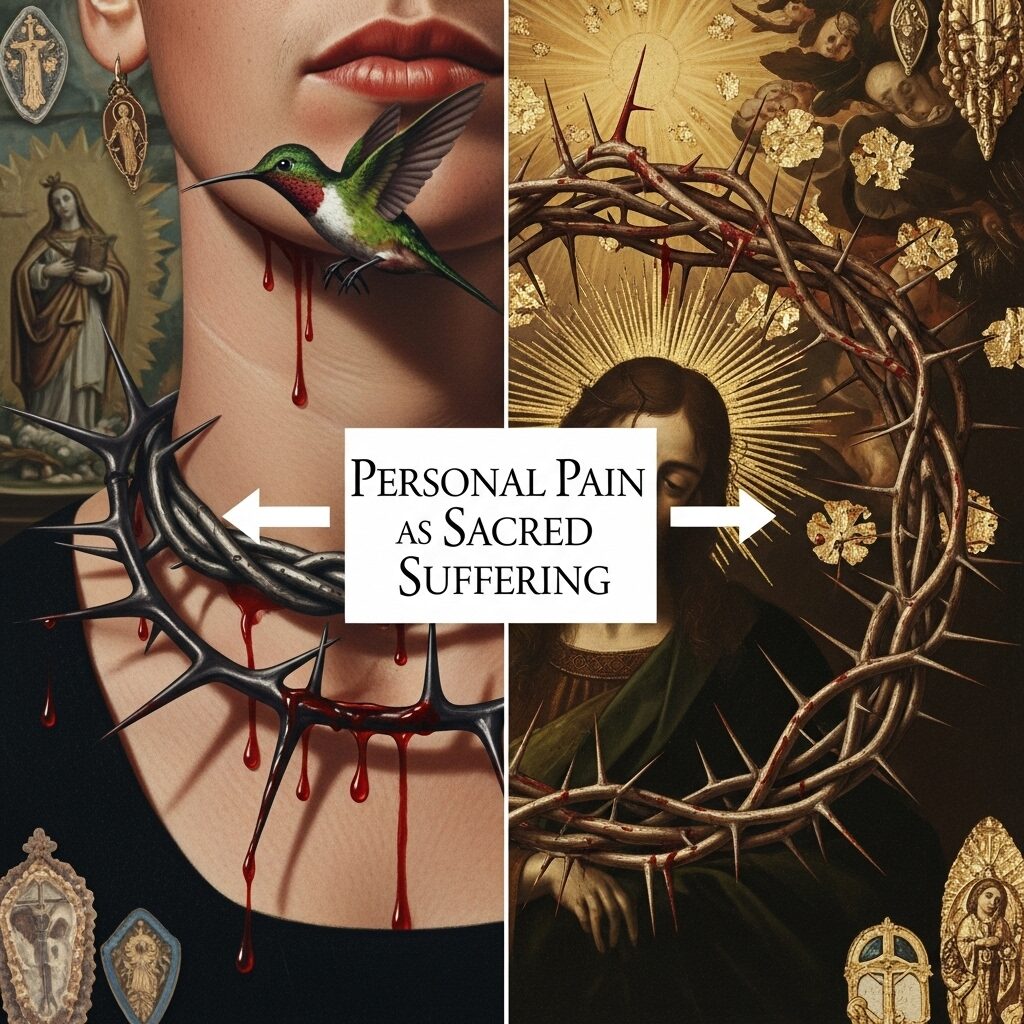
In Mexican Catholic culture, suffering was often seen as noble and purifying. Frida transformed this religious concept into personal mythology, presenting herself as a secular saint whose pain had meaning and purpose. The thorns that pierce her neck represent both physical agony and emotional wounds, while the blood they draw symbolizes the sacrifice she made for her art.
This connection to the secret language of artists shows how Frida adapted universal religious symbols to express her unique experience. She wasn’t just copying Christian imagery—she was rewriting it to tell her own story of suffering and survival.
The Black Cat: Omens and Superstition in Mexican Art
Black cats appear in several of Frida’s paintings, most notably in “Self-Portrait with Thorn Necklace and Hummingbird,” where a black panther lurks behind her left shoulder. In Mexican superstition, black cats are powerful omens, often associated with death, bad luck, and supernatural forces.
But Frida’s relationship with death was complex. Having survived near-fatal accidents and lived with chronic pain, she saw death not as an enemy but as a constant companion. The black cat represents this familiarity with mortality, the shadow that followed her throughout life.
In contrast to the protective monkey and the hopeful hummingbird, the cat embodies darker forces—jealousy, betrayal, and foreboding. Some art historians suggest it represents Diego’s infidelity or Frida’s own jealous nature. The cat’s positioning behind her shoulder suggests these dark emotions lurked just out of sight, always present but not always acknowledged.
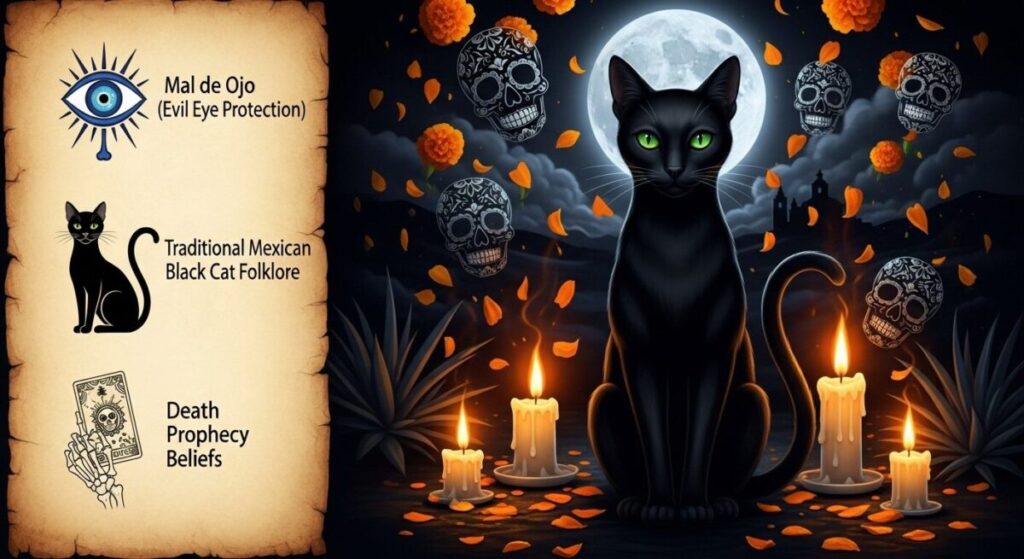
Roots and Growth: Nature Symbolism in Frida’s Work
Plants, roots, and botanical elements appear throughout Frida’s paintings, connecting her to the earth and Mexican artistic traditions. In works like “Roots” (1943), she literally grows from the ground, her body becoming part of the landscape. This imagery reflects both indigenous Mexican art traditions and her personal sense of being rooted in Mexican soil.
The roots symbolize several concepts:
- Connection to homeland: Her deep love for Mexico
- Life force: The energy that sustained her through illness
- Growth through pain: How suffering could lead to creative flowering
- Feminine power: The earth mother archetype from pre-Columbian cultures
Decoding Frida: Why Her Symbols Still Matter Today
Understanding Frida Kahlo’s symbolic language helps us see why her art remains so powerful nearly 80 years after her death. Her symbols speak to universal human experiences—pain, love, identity, and mortality—while remaining deeply rooted in Mexican cultural identity in art.
| Symbol | Cultural Source | Personal Meaning | Universal Theme |
|---|---|---|---|
| Monkey | Aztec mythology | Protection/fertility | Companionship |
| Hummingbird | Mexican folklore | Love/resurrection | Hope in darkness |
| Thorns | Christian imagery | Martyrdom/sacrifice | Noble suffering |
| Black Cat | Mexican superstition | Death omens | Shadow self |
| Roots | Indigenous beliefs | Earth connection | Belonging |
Modern viewers connect with these symbols because they address timeless human concerns. Whether we’re Mexican or not, Christian or not, we understand the need for protection, the pain of lost love, the struggle with mortality, and the desire to belong somewhere.
Her approach to self-portrait tradition influenced countless artists who followed, showing them how personal symbols could create universal meaning. As one of the most important women artists in history, Frida proved that art could be deeply personal while speaking to everyone.
Decoding Frida Kahlo’s symbolic art reveals an artist who transformed personal pain into universal language, using common art symbols in revolutionary ways. Her monkeys, hummingbirds, thorns, cats, and roots continue to speak to us because they express truths about human experience that transcend time and culture. For anyone interested in emotional expression in art, Frida’s symbolic vocabulary offers a masterclass in how visual elements can convey the deepest feelings of the human heart.
🌹 Frida Symbol Designer
The Frida Kahlo Symbol Designer is an interactive tool allowing you to create unique symbolic artwork! For fun!
Key Functionality
- Add Symbols: Choose from twelve key symbols found in Frida Kahlo’s art (like 🌺, 🐒, 💀, ❤️) from the top bar to place them on the canvas.
- Customize Background: You can upload your own image to use as a background, or remove it as needed.
- Edit Elements: Click any symbol on the canvas to select it. The sidebar controls will appear, allowing you to fine-tune its look:
- Drag and Drop for easy positioning.
- Adjust Size (20px to 200px) and Opacity.
- Set Rotation from 0 to 360 degrees
- Use Duplicate or Delete buttons for quick adjustments.
- Export: When your design is complete, click “⬇️ Export Design” to save the final image as a PNG file.
Loading Frida Symbol Designer…
FAQs: Frida Kahlo Symbols
What do the animals in Frida Kahlo’s paintings represent? Animals in Frida’s paintings carry deep symbolic meaning. Monkeys represent protection and fertility, hummingbirds symbolize love and resurrection, and black cats embody death omens and dark emotions. Each animal connects to Mexican cultural beliefs and Frida’s personal experiences.
Why did Frida Kahlo use so many symbols? Frida used symbols because they allowed her to express complex emotions and experiences that words couldn’t capture. Growing up in Mexican culture rich with symbolic traditions, she naturally turned to visual metaphors to communicate her inner world and connect with viewers on a deeper level.
What is the meaning of the thorn necklace in Frida’s art? The thorn necklace references Christ’s crown of thorns, symbolizing martyrdom and sacrifice. For Frida, it represented her physical pain and emotional suffering, transforming her personal agony into something sacred and meaningful within Christian symbolic tradition.
How do you analyze symbolism in artwork? To analyze symbolism in artwork, start by identifying recurring visual elements, research their cultural and historical meanings, consider the artist’s personal context, and examine how symbols work together to create overall meaning. Understanding the artist’s background and cultural influences is crucial for accurate interpretation.
Additional Resources
- Frida Kahlo Museum Official Website – Explore her house and original works
- MoMA’s Frida Kahlo Collection – View high-resolution images of her paintings
- Mexican Cultural Symbols Guide – Learn about pre-Columbian and colonial Mexican symbolism
- Aztec Mythology Database – Understand the mythological sources of her symbols
- Art History Resources on Symbolism – Academic articles on symbolic art interpretation

